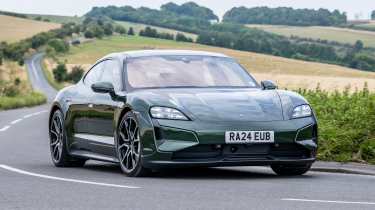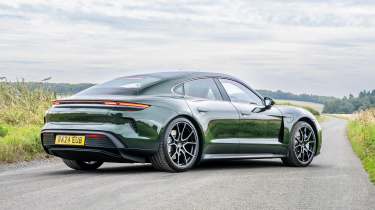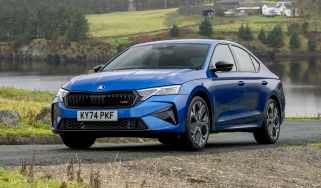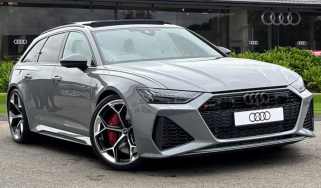Porsche Taycan review – the most complete electric car on sale
The Taycan is one of the most broadly talented EVs you can buy, with class leading performance, range and genuine Porsche DNA in the way it drives
Such is the rapid pace of EV development that it always feels like there’s something around the corner to set a new benchmark, shifting the goal posts of what an electric car can do. That’s what Porsche has done with the latest, second-generation Taycan. It may look familiar, but it’s taken a huge step forward in every key metric – from performance, range and charging speed to cruising comfort and dynamic ability – to make one of the most desirable EVs on the planet even better. What you’re looking at is the new yardstick for premium electric saloons.
As one of the best-selling Porsches of recent times, the Taycan appears to have resonated with premium electric car buyers (although it’s a different story on the used market, where it’s been hit with massive depreciation). Its combination of style, polished driving dynamics and build quality – not to mention its ability to time travel when you plant the throttle – make it one of the most rounded EVs you can buy, more so than ever in Gen 2 guise.
The Taycan comes in a variety of forms, including a Sport Turismo estate, a jacked-up, plastic-clad Cross Turismo and a track-honed Turbo GT. There’s a model for almost every use case – if you have the cash, that is. The Taycan doesn’t come cheap, starting at £86,500 and stretching all the way to an astonishing £186,300 in its flagship form; big money, but that’s the price you pay for what is an electric saloon at the cutting edge.
Porsche Taycan: in detail
- Engine, gearbox and technical highlights > All but the base model feature a motor on each axle, the rear mated to a two-speed ’box
- Performance and 0-60 time > Turbo models have truly astonishing performance, but even the single-motor Taycan can out-sprint many sports cars
- Ride and handling > There’s impressive depth to the steering and chassis, and Porsche’s Active Ride tech can be freakish
- MPG and running costs > If you’re charging from home then this is an amazingly affordable Porsche to run. Make use of fast public charging and it’s a different story
- Interior and tech > Loaded with tech and built with an impregnable solidity, but is it a bit stark?
- Design > The Gen 2 facelift is subtle, but the Taycan was already one of the most handsome EVs to start with
Price and rivals
The Taycan starts at £86,500 for a basic rear-wheel-drive model with a standard 82kWh (usable) battery pack and 402bhp. Next up is the £95,900 Taycan 4S, which as the name suggests adds a motor at the front axle for four wheel drive, and a higher 537bhp output.
More reviews
In-depth reviews
Review
Reviews
Stump up £134,100 and you’ll get the first of the three Turbo models, which packs a massive 872bhp punch and a largely 97kWh Performance Battery Plus as standard. If (for reasons we can’t fathom) you need more power, the 939bhp Turbo S has you covered for £161,400, and then comes the £186,300 Turbo GT. With aero mods and a track-oriented chassis tune it’s the most focused Taycan you can buy, and the most powerful with 1020bhp. That feels as nutty as it sounds.
As well as the standard saloon, you've the choice of either a Sport Turismo estate or jacked-up all-terrain Cross Turismo. Both are marginally heavier and take a small range hit, but offer more luggage space and more rear headroom. The Sport Turismo carries a premium of less than £1000 over the saloon, and depending on the chosen model, the Cross Turismo costs between £1100-4500 more. The latter is only available in four-wheel drive dual-motor form, for obvious reasons.
The premium electric car class is expanding at an exponential rate, not least from within the Volkswagen Group itself with Audi’s facelifted e-tron GT. It shares its platform with the Taycan and slips in between its derivatives in terms of performance and price, with a less overtly sporting approach. The S e-tron GT kicks things off at £108,680, with the flagship RS e-tron GT Performance starting from £144k.
The Taycan's obvious rival, the Tesla Model S, is now a more niche proposition in the UK, being exclusively available in left-hand drive. This isn’t a huge loss, though, because the 1006bhp Plaid version feels a generation (or two) behind the Taycan in terms of its dynamic finesse and sophistication, and is by no means as well built. BMW’s i5 M60 is another alternative, delivering excellent refinement, pace and some of the best onboard tech in the business but lacking the Taycan’s hunkered-down sports saloon feel.
Mercedes-AMG has also entered the space with its EQE53, and while it's bursting with tech and offers huge pace, the Porsche is far more involving from behind the wheel. Lesser known manufacturers are gearing up to launch new competitors in the UK, too; Lucid has already impressed us with its Air saloon, and in 1200bhp+ Sapphire form, it uses true torque vectoring to deliver enormous capability. The Taycan leads the pack for now, but it might have a more difficult time as these new rivals swarm in.





